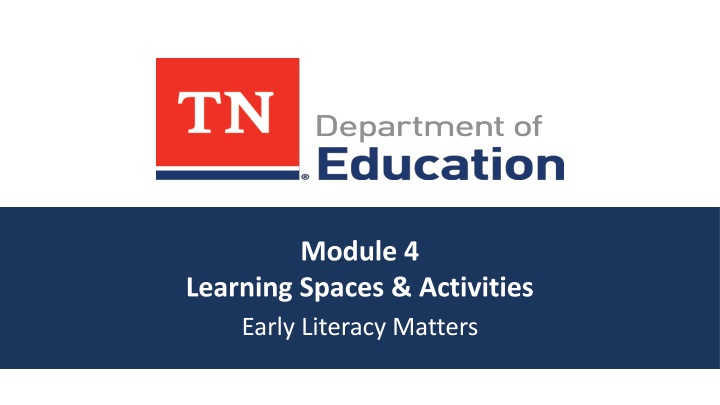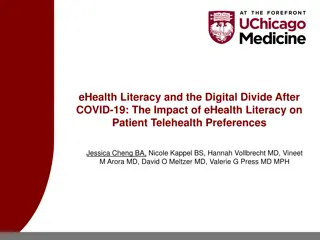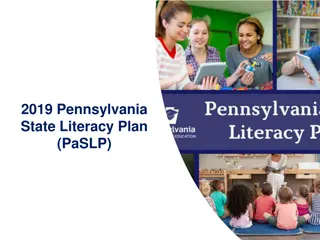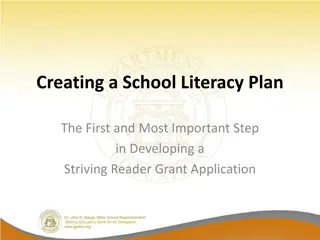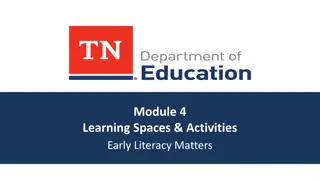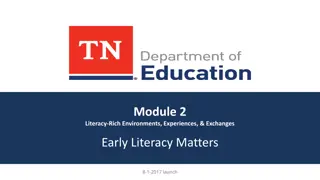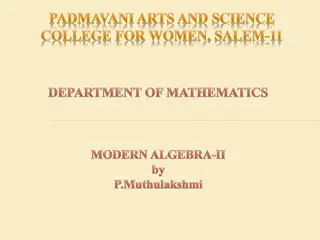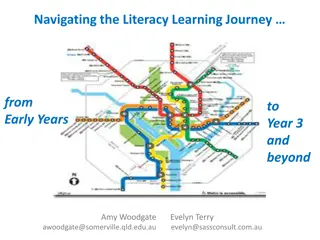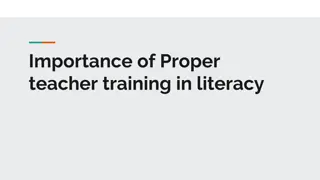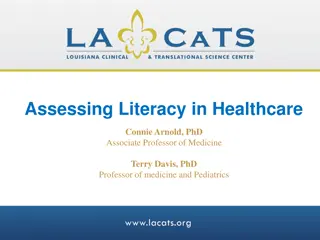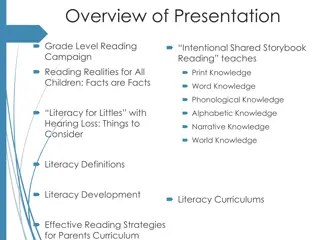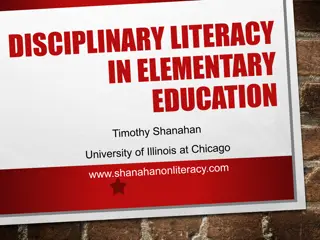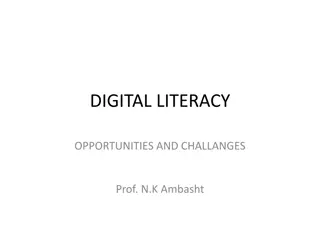Creating Book-and-Language Rich Learning Spaces for Early Literacy Development
Explore Module 4 which focuses on creating immersive learning environments for children to enhance their early language and literacy skills. Learn how to design spaces that encourage exploration, problem-solving, and concept-building through activities and modeling strategies. Aligns with the Read to be Ready Campaign emphasizing the importance of early literacy and community involvement.
Download Presentation

Please find below an Image/Link to download the presentation.
The content on the website is provided AS IS for your information and personal use only. It may not be sold, licensed, or shared on other websites without obtaining consent from the author.If you encounter any issues during the download, it is possible that the publisher has removed the file from their server.
You are allowed to download the files provided on this website for personal or commercial use, subject to the condition that they are used lawfully. All files are the property of their respective owners.
The content on the website is provided AS IS for your information and personal use only. It may not be sold, licensed, or shared on other websites without obtaining consent from the author.
E N D
Presentation Transcript
Module 4 Learning Spaces & Activities Early Literacy Matters
Module 4: Learning Spaces & Activities Module 4 at a Glance In Module 3, you considered the important role teachers play in developing children s oral language and increasing their vocabulary. In this module, you will: Discover how to create book-and-language rich learning spaces that invite children to explore, inquire, create, problem-solve, and share learning. Explore the I do you watch, I do you help, You do I help, and You do I watch strategy for modeling and practicing early language and literacy skills. Gain a better understanding of how to use learning spaces and activities to provide increased opportunities for children to build conceptual knowledge. 2
Learner Outcomes for Module 4 Learner Outcomes: LO1: Learners will describe developmentally and age-appropriate learning spaces which are book- and-language rich learning spaces and invite children to explore, inquire, create, problem-solve, and share learning. LO2: Learners will explore the I do you watch, I do you help, You do I help, and You do I watch strategy for modeling and practicing early language and literacy skills. LO3: Learners will examine how to use learning spaces and activities to provide increased opportunities for children to build conceptual knowledge. 3
Connections to the Read to be Ready Campaign: This module aligns to the current Read to be Ready Campaign s following key beliefs: Early Literacy Matters: Teachers are critical: It takes a community: Video link to Early Literacy Matters from Read to be Ready Website: https://www.youtube.com/watch?v=60J8qRjRPkE 4
Module 4 Overview Overview: Module 4 will consist of 3 instructional presentations. These presentations will help you reflect on the special role a book-and-language rich classroom environment plays in providing opportunities for children to interact with and learn from one another, teachers, and materials. In Presentation 1, you will learn more about how to create book-and-language rich learning spaces that invite children to explore, inquire, create, problem-solve, and share what they learn. In addition, you will explore how learning is enhanced when books are included in all areas of the classroom. In Presentation 2, you will learn the benefits of using the I do, We do, and You do strategy for modeling and practicing early language and literacy skills. Emphasis is placed on scaffolding learning and providing opportunities for repeated practice. In Presentation 3, you will learn how to learning spaces and activities can be designed as opportunities to build conceptual knowledge. Following each presentation, you will apply your learning through Application Activities included in the Learning Guide. 5
Suggested Timeline for Completing Module Modules contain 4 short presentations that are designed to be completed during relaxed ratios or other times as set by your school or agency. Your director or program coordinator may suggest or establish a timeline for each presentation to be completed within the module. Please take a moment to confirm your site s requirements while noting the submission deadline for the final Learning Application Assignment that you will submit electronically to your literacy coach for feedback and support. All other completed activities will remain in your participation guide and available for your coaches review. Section 1: Start at beginning of module and complete Presentation 1 and Practice Activity 1. Section 2: Complete Presentation 2 and Practice Activity 2. Section 3: Complete Presentation 3 and Practice Activity 3. Section 4: Complete Learning Application Assignment for Module 4 and submit it electronically to your literacy coach for feedback and support. Please refer to your Learning Guide for a detailed Module 4 timeline and checklist. 6
Presentation 3: Knowledge Building Learning Spaces Learning spaces or centers should include activities that allow children to build knowledge around a unit of study connected to real-life experiences. Activities included should be: developmentally appropriate incorporating physical, social, personal, cognitive, and language skill development. provide opportunities to explore concepts using their five senses. carefully sequenced to provide a continuum of knowledge building. Consider the knowledge children will gain as they rotate through the learning spaces or centers. 7
Building Knowledge When building knowledge, it is important to help children link new concepts to familiar concepts. Meaningful connections are another priority of good teachers. Young children learn best when the concepts, vocabulary, and skills they encounter are related to something they already know and care about and when the new learnings are themselves interconnected in meaningful, coherent ways (Copple & Bredekamp, 2013, p. 42). 8
Knowledge Building Tasks Children are curious about themselves, families, community workers, plants, animals, and weather. Choose one of these units of study to create knowledge building activities or tasks for the children. Keep in mind that the daily activities or tasks should be age appropriate and be connected to real-life examples. Daily activities or tasks should be intentionally sequenced to ensure children s knowledge builds and deepens as they engage in the daily activities or tasks. 9
Using Literature and Informational Books Reading both literature and informational books to children provide wonderful opportunities for expanding children s knowledge on a topic of study. Read to children at different times of the day even when they are in learning centers. Adding literature and informational books around the room for children to access and explore will increase knowledge building opportunities. 10
Practice Activity 3: Knowledge Building For this practice activity, think back to the story of Maple read aloud at the start of this module. There are many concepts within the story to build knowledge around: changes in the seasons, weather patterns, how people adapt to changes in seasons and weather, and how plants adapt to changes in seasons and weather. For young children, we build knowledge by letting them experience the learning and apply new concepts to what they already know. As you learned in Presentation 3 of this module, intentionally planned learning spaces provide children with opportunities to meaningfully explore new concepts and relate them to real-world experiences. 11
Practice Activity 3 continued Using the example of Maple, let s consider how learning spaces and materials could help a child build knowledge: A discovery center that changes objects seasonally would allow children to observe and explore the changes in seasons and weather. Changing photos of families in the infant and young toddler classroom is a subtle way to introduce children to how people in their family adapt to changes in the weather. A book could be created and shared that features the child s family in Winter, Spring, Summer, or Fall. Older children may enjoy creating a seasonal book about observed changed to the school playground. Literature and Informational books can be added to all areas of the classroom to help build knowledge around seasonal and weather changes. The science/nature center could have various leaf shapes to explore using a magnify glass. The art center could have objects from nature to create a season collage. The dramatic play area could contain seasonal props for children to role play with. 12
Practice Activity 3: Knowledge Building Choose a book provided by the Imagination Library in your welcome kit. Read the book and identify concepts of knowledge to build on. Consider how activities and tasks build upon one another to add to what the child knows about the topic. Complete the Learning Spaces Planning Web included in the Learner Guide to show how knowledge building will occur in different learning spaces in your classroom. 13
Reflection for Activity 3 Reflect on the Learning Space Planning Web activity you completed and briefly respond to each of the questions below in the Learning Guide: How will planning ahead be helpful in providing children opportunities to build knowledge? What additional books could you include in each area to connect to your chosen book and to further build knowledge of concepts. How might children respond to the learning spaces? How will your interactions help to reinforce knowledge building? 14
End of Section 3 Congratulations, you just completed Section 3 of Module 4. Be sure you have completed Section 3 activities in the Learning Guide. When ready, move on to the presentation for Section 4. 15
